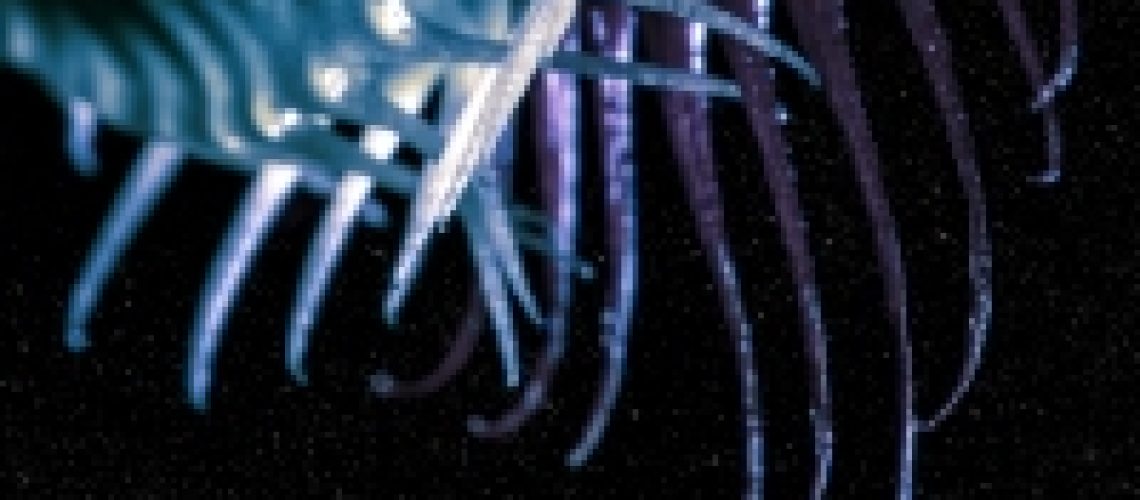Interference, the second book of Sue Burke’s Semiosis series, ended with cuttings of the native, rainbow bamboo Stevland from the human-colonized world of Pax to Earth. Usurpation picks up generations after this event of reverse colonization to relate what is occurring to humans on Earth and how Stevland’s offspring are adapting.
For those not familiar with the series, go to your local library or book shop of choice and get a copy of Semiosis, Burke’s Locus-, Campbell-, and Clarke-nominated debut novel that starts the story. Whether continuing on reading the other novels or not, Semiosis works as a stand-alone novel of first-contact, or as the first chapter of a much-broader tale that will take a reader in new directions.
I reviewed Interference on my blog back upon its release, but never wrote directly on the first novel. However, I have used Semiosis in my Biology in Fiction and Film honors course, and students seemed to enjoy it a lot – there were many big Stevland fans. While that first novel can appeal to SF readers through its unique take on first-contact with alien life, the novel at its heart is a fictional treatise on the maintenance of healthy community ecology. This biological thematic core extends through the human/human, human/alien-plant, and other human/alien politics of the other two books of the series.
Interference shifts both from the first-contact genre and the generational time-span of Semiosis to focus on a shorter pivotal moment in Pax history where symbiotic compromise and social/ecological compromises avert potentially catastrophic conflict and threats.

With the arrival of the conscious and intelligent rainbow bamboo on Earth, Usurpation returns to the first-contact genre in a nice paralleled book-end to the start of things in Semiosis with humanity’s arrival on Pax. This new novel further expands the series as a story of the rainbow bamboo and how its shared evolutionary drive to reproduce and spread through the universe can be achieved through ecological partnership with humanity.
And this is an interesting ecological partnership, neither utopian nor dystopian in nature. Each side sees benefits to working together cooperatively, even through moments of reticence, fear, uncertainty, or sacrifice. Neither side sees the partnership as equal, and both tend to look at themselves as having the upper hand of guidance and control. Burke excels at conveying the gray areas of symbiosis and how that manifests socially and politically on Pax, and now with Usurpation on Earth.
Usurpation more closely follows Interference in its page length and narrative timeline. There are relatively few chapters, and two chapters take up the bulk of the novel, making the book read somewhat like two novellas with some connecting short stories. Collectively the shorter sections introduce readers to the status of human society on Earth – and the effects our Anthropocene era has had on global ecosystems, humans and all. Each of these shorter sections introduces a main human character in some part of the world who is trying to deal with war, devastation, and disease in different ways.
This setting of the scene allows for the longer chapters that include portions from the point of view of the dominant rainbow bamboo individual settled on Earth, Levanter, and the point of view of humans who Levanter begins interacting with in efforts to solve crises and adhere to messages from Stevland on Pax that encourage the rainbow offspring to work with and guide humans for communal benefit.
Unlike in Semiosis with the colonization of Pax and discovery of rainbow bamboo, humans on Earth are too familiar with their surroundings, too occupied with global turmoils, and too full of assumptions based on Terran life to give much deep thought to imports and immigrants from Pax such as the rainbow bamboo plant. The humans of Earth don’t realize the plant is sentient, and Levanter’s accumulated knowledge leads the plants to fear revealing themselves to humans. Despite the wisdom from Stevland and stories of what humans and plant have accomplished on Pax, Levanter is at a loss of how to initiate or achieve a similar situation on Earth without genocidal destruction resulting.
Not helping in these decisions or this process is another factor present on Earth that Pax hasn’t had to deal with: robots and artificial intelligence. Burke introduces this element (and characters) to Usurpation as the largest addition to the Semiosis series. Certain robots have begun to go ‘wild’, demonstrating a certain independence. But as with human blinders to communicating with and understanding the nature of Pax’s rainbow bamboo, so too does humanity seem to not actually realize what is going on with its robots. On the other hand, Levanter has found ways to integrate into robotic networks as effectively as biological ones. So Levanter knows what the robots are talking about, what they have planned.
The characters from the shorter chapters return to make appearances in the conclusion of the novel as Levanter learns to mediate and guide between robot, human, rainbow bamboo, and other species in ways that can ensure mutual survival (albeit with sacrifice.)
Compared to the previous books, the length and structure of Usurpation make it less successful as a novel. The shorter chapters add flavor and background to the main plot, but don’t really seem integral to that core. As a strict novella, it could have achieved all it ends up doing in its actual form. As a strict novel, it could have expanded and added complexity to the side characters.
Nonetheless, I enjoyed Usurpation as much as the other novels overall, perhaps even more than Interference. Additionally, the element of robot revolution to the series works very well, an Earth-based counterpart to events on Pax that threatened the human-plant symbiosis. It’s also a unique take on a frequent SF genre element that intersects with the reverse first-contact story of Usurpation in interesting ways.







